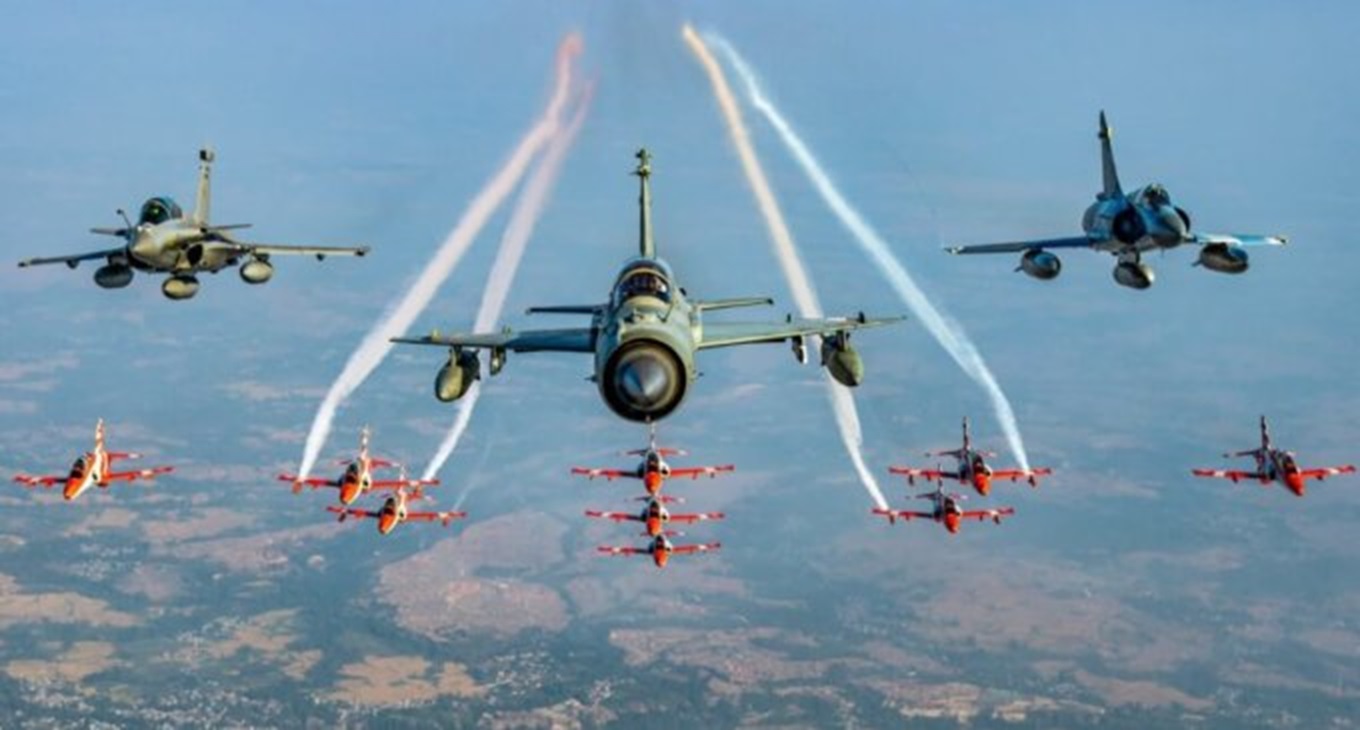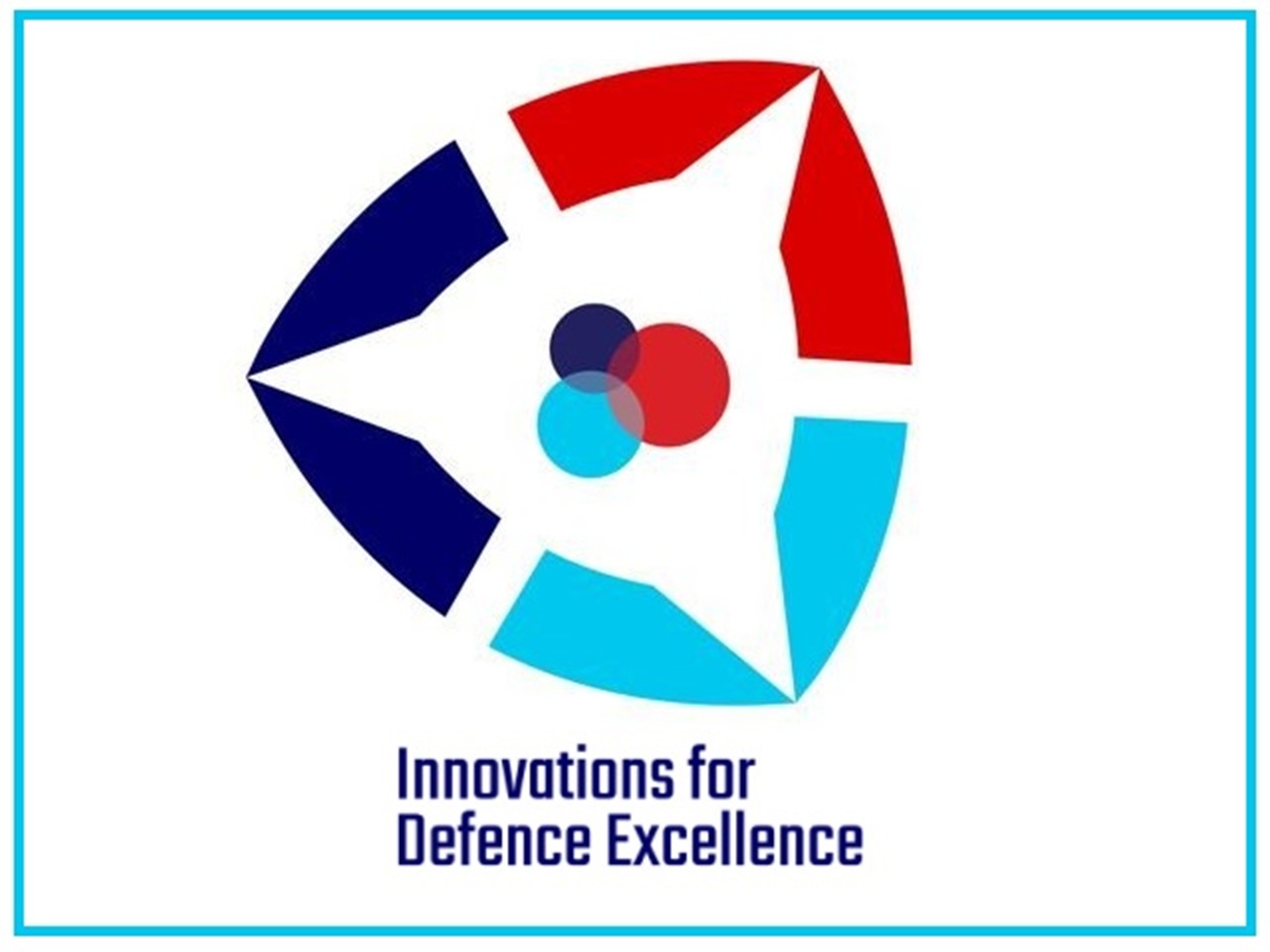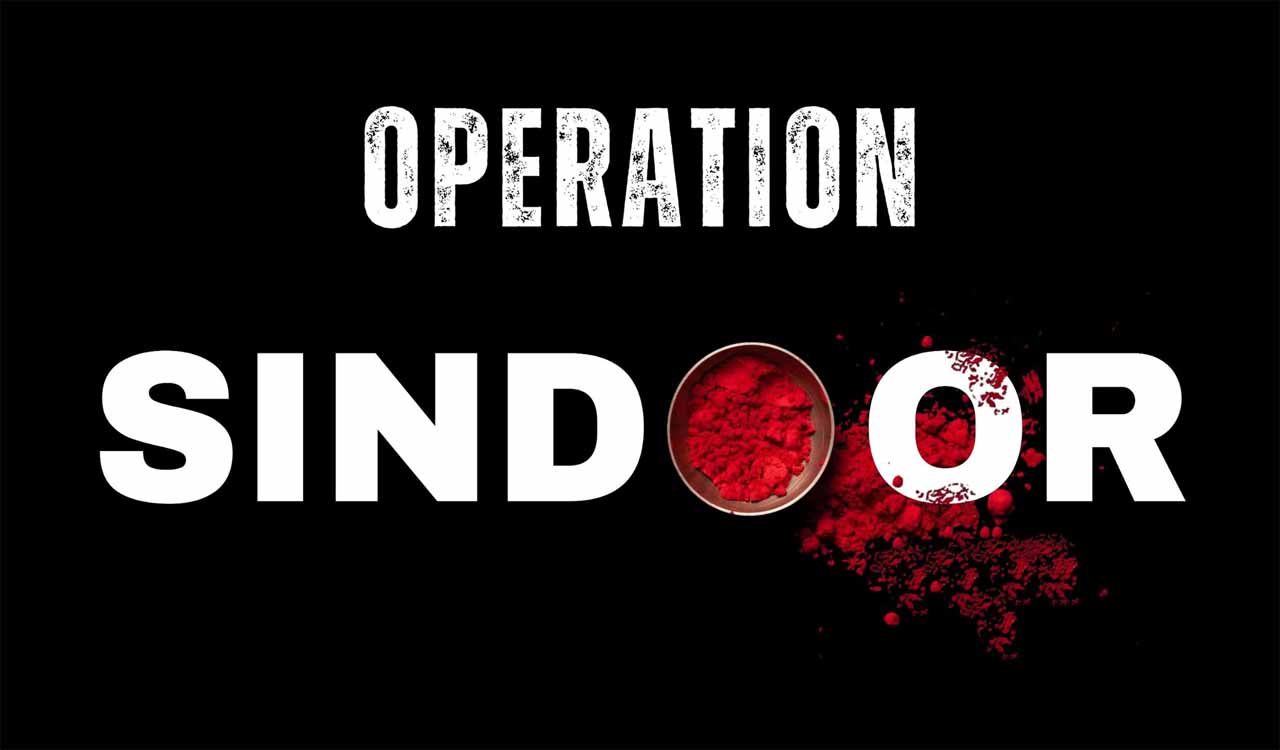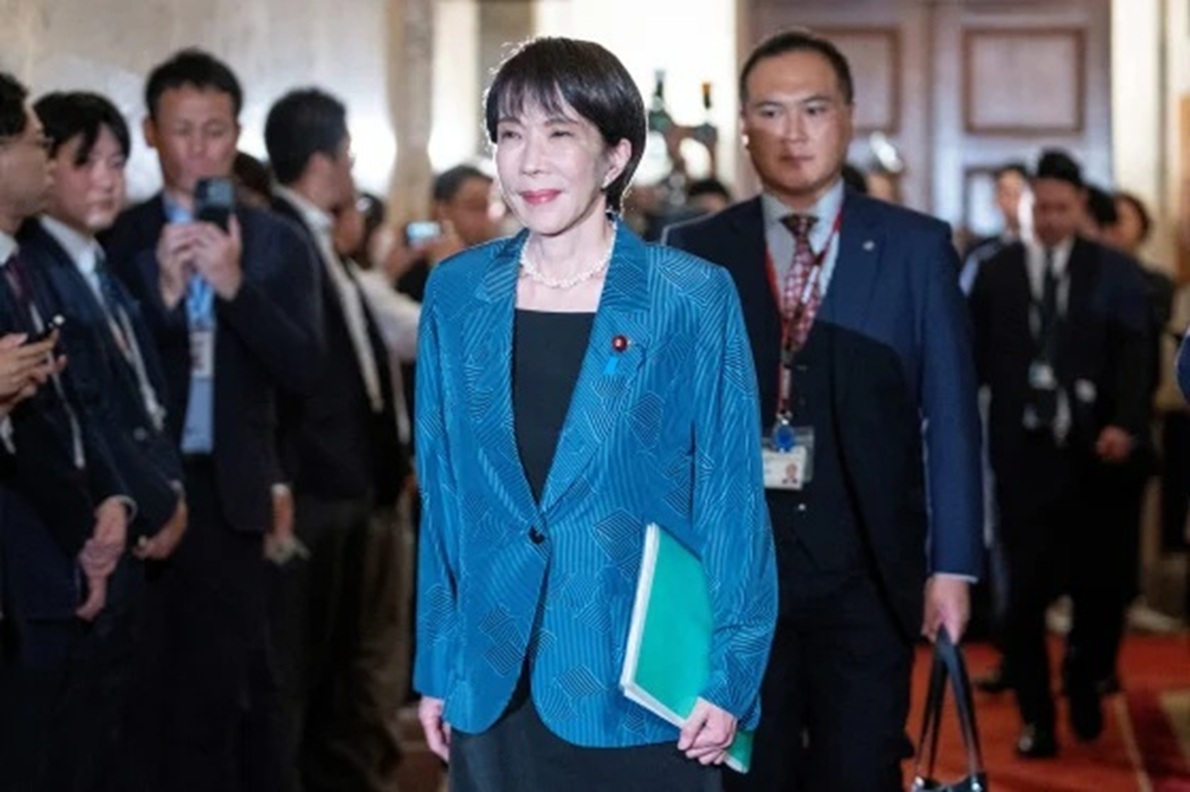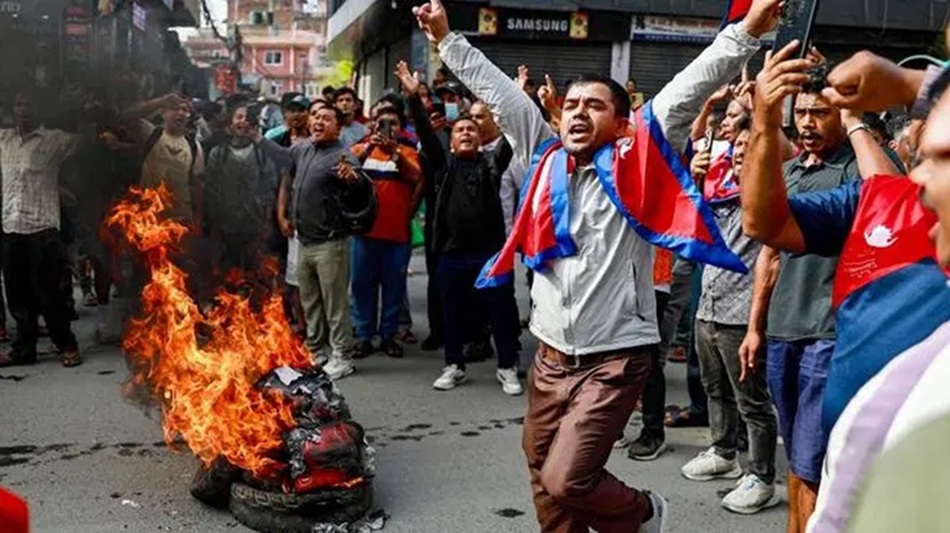“A consummate leader is the one who cultivates the moral law and strictly adheres to methods and discipline; thus making it his power to control success”, stated Sun Tzu, the Chinese military general, strategist, philosopher, and writer of the 7th Century.
In 91 years of its existence, the Indian Air Force has come a long way from operating fly-by-instinct Wapitis to; flying state-of-the-art fly-by-wire Mirairge 2000, thrust vectored SU-30 MKI air superiority fighter, Rafale multi-role fighter, IL-76 and C-17 strategic airlift aircraft, S-400 aerial defence system and the homegrown Tejas 4.5 generation multi-role combat aircraft, Advanced Light Helicopter, and Prachand advanced attack helicopter etc. In 2032, the IAF will complete 100 years including 15 years as part of the Royal Air Force. Keeping in tune with the growing stature of Bharat, the IAF is scaling up and transforming itself for strategic reach and effect. IAF is the fourth largest Air Force in the world with a fleet strength of over 1700 aircraft of which 900 are combat aircraft with continental reach and precision strike capability. In the last two decades, the IAF has fast-paced its modernisation plan and transformed it into an Aerospace Force capable of carrying out precision strikes deep inside the enemy territories and undertaking rescue operations from conflict zones in other continents. By our march towards becoming the third largest economy and the manufacturing hub of the world, the IAF needs to further scale up its capabilities for undertaking operations far beyond its airspace as an instrument for political signalling besides ensuring the aerospace security of the nation.
IAF – Scaling up And Transforming to Become A Global Aerospace Power
The evolution of air warfare in the last three decades starting from; the Persian Gulf war in the 1990s to the ongoing Russia – Ukraine and recent Israel- Hamas conflict in the Middle East; has undergone unprecedented change, and it can be safely assumed that in future instead of the costly air dominance fighters and stealth bombers, it will be the low-cost drones and MQ9A Reaper type UCAVs which will be the mainstay platforms for offensive and defensive operations. Notwithstanding the relevance of deterrence strategy based on supremacy in the number and technologically advanced weapons and aerial delivery platforms, it is the leadership prowess, which will enable the IAF to become a truly global aerospace power which can undertake operations anywhere in the world with the least collateral damage. With the government hotly pursuing the implementation of `Theatre Command’, the IAF leadership needs to adopt transformational leadership from the current transactional leadership.
In future, wars will be fought in space and cyber domains predominantly be controlled by the sixth domain of combat – the cognitive spectrum. Leadership is a force multiplier, encompassing; the force structuring, evolving air warfare doctrines, human resource management, innovation and use of cutting edge technology leveraged aerial platforms and weapons, creation and maintenance of space-based C4ISR, stealth and autonomous aircraft as well as UCAVs for winning future aerospace wars for the country, therefore the role of leadership is paramount. The IAF needs thought and transformational leaders who can envision sixth and seventh-generation stealth autonomous platforms, space-based C4ISR and situational awareness, control of Electro Magnetic spectrum, AI and ML embedded systems, quantum computing, quantum communication, robotics, cyber defence and smart materials for the future aerospace platforms and weapons etc. The current leadership training and mentoring in the IAF is transactional whereas, the future leadership training demands a paradigm shift with more focus on thought, transformational and outcome-based leadership.
IAF Force Structure: Current and Future
As per statutory acts; the Armed Forces Act of 1947, the Constitution of India, and the Air Force Act of 1950 – the IAF is entrusted with the responsibility of safeguarding Indian airspace and thus furthering national interests in conjunction with the other branches of the armed forces. Bharat with growing stature and global responsibilities be it under the aegis of the United Nations or as part of any multinational forces, the IAF would be tasked to perform tasks in other continents for peacekeeping and to provide succour to people ravaged by natural as well man-made disasters. The changed operational spectrum demands that the IAF scales up its inventory with strategic reach and precision strike capability and hone its leadership to operate in a global environment. Though the IAF can boast of credible strength in terms of inventory, many of the platforms are 4th and 4.5 generation whereas for fighting future wars, the IAF needs to equip itself with 5th and 6th generation weapons; manned and unmanned delivery platforms and beyond visual range missiles of more than 200 km. Space is the frontier of future wars; therefore, it is imperative that the IAF also create space warfare capabilities in future.
The Indian Air Force plans to attain 42 squadron strength by 2035 and deploy 450 fighter jets each along the borders of Pakistan and China. The IAF also plans to acquire a large number of stealth autonomous UCAVs; DRDO AURA, swarm drones (ALFA-S) and uncrewed aircraft to transform into a fully advanced Network-Centric Force capable of sustained multi-role operations along the entire spectrum. Upgradation of SU-30MKI with AESA radar with 400 km track, high band jammer pod, Dhruti Radar Warning System, and a Dual Color Missile Approach Warning System is also underway. The other significant inductions include; 12 Squadrons of Tejas Mk 1A and Mk 2 by 2031, another six Squadrons of Rafale, 125 AMCAs Mk1 and Mk2, 56 C295 medium transport aircraft, 156 Prachand LCH, weaponized UAV Archer, Akash NG, VSHORADS, and MPATGMUAV Archer, which could also be weaponised. DRDO also has developed; new missiles, drones and UCAVs for the IAF. Akash NG, VSHORADS, MPATGM missiles, Tapas MALE drones, MQ9B Predator HALE seek and killer drones, indigenous NETRA AEW mounted on Airbus 321 platform, more air defence missiles S-400/600 or similar systems, hypersonic Brahmos cruise missiles, MRSAMs, Combat Air Teaming System (CATS) and XRSAM long-range surface-to-air missile defence are some of platforms and systems which will be inducted shortly.
As the IAF addresses today’s environment of transformation, and the MoD’s goal of creating a lasting environment in which new ideas can flourish, the IAF should address the leadership requirements created by the emerging threats, and ensure an enduring strategy is in place to develop future leaders. In the last few years, the IAF has begun leadership development efforts in earnest and is tailoring plans to focus on training leaders who can adapt to the future demands of the force. Looking specifically at Officer Cadre, the leadership development programmes should focus on transformation rather than transaction. The IAF’s leadership development mission should be to educate, train, and inspire men and women to become officers of character who are motivated to lead the Air Force and Space Force in service of the nation.
Air Force Leadership Development Model
The leadership development programmes in the IAF should be full-spectrum and must encompass training its officers for tactical, operational and strategic functions. Some of the important aims and elements of such a leadership development model are given below:-
(a) Tactical. Developing tactical leadership competencies to lead operations at flight, branch (operations, maintenance and administration) and station level. Leading and influencing peers and subordinates at the operational level and providing a broad understanding of team leadership and an appreciation for institutional leadership. Tactical leadership is more concerned with providing professional and small-group leadership. Tactical leadership also should cover, human resources, conflict, technology management and the use of IT and IoT for enhancing operational efficiency and resource management. To enhance tactical leadership skills at a lower level, the BPKC and APKC syllabus should include a study on; Force Structuring, Organisation Behaviour, Risk Management, Operations Research and Managerial Communication etc.
(b) Operational. Operational leadership development pertains to honing leadership competencies to lead within and across the squadrons, wings, stations and commands/theatres. Operational leadership training should enable officers to understand organisation and team dynamics in various operational environments. Competencies required for undertaking operations at the command/theatre level and special missions. The curriculum for Operational Leadership should include Revolution in Military Affairs (RMA) – in future warfare; weapons, platforms, technologies, space and cyber warfare and use of disruptive technologies viz – Applied AI (human-machine symbiosis), Autonomous Platforms (human-machine teaming, autonomous countermeasures, Quantum Communication, Sub Centimeter Navigation using AI and ML embedded Sensors. The middle-level officers’ skill enhancement training should enable them to use the next levels of technologies for conducting air and space warfare with the least cost and maximum impact.
(c) Strategic. Strategic leadership development programmes should focus on developing leadership competencies to envision future force structure as well as to lead commands/theatres, service HQ and operations across the globe. Leading organisations and teams up to the international level, based on a thorough understanding of geo-strategic and geo-political environments are the prime responsibilities of strategic leadership. Higher-level leaders of the IAF are now trained at NDC and its equivalent in foreign countries and at the College of Air Warfare. The course curriculum at these institutes cater for developing leaders mostly for operational roles whereas to train leaders for strategic roles – officers need to do doctoral and postdoctoral research at institutions like the School of Advanced Air and Space Studies (SAASS) in the USA and other Air and Aerospace universities in other advanced countries. The IAF also can send their senior officers to IIMs to do doctoral and post-doctoral programmes on “Air and Space Leadership”.
Essential Leadership Qualities
The leadership in the IAF irrespective of the levels – tactical, operational and strategic, are entrusted with the responsibility of inducting, operating and maintaining highly costly; weapons, delivery platforms and systems embedded with cutting-edge and disruptive technologies and therefore, leaders need to be cost conscious and innovative to ensure optimum utilization of the resources and to work in an intrusive media environment. Some of the important traits and leadership qualities needed for IAF leadership are enumerated below: –
(a) Exercising Sound Judgment – Developing and applying broad knowledge and expertise in a disciplined manner, for understanding interrelationships among issues and implications for the operational preparedness of the Air Force; and taking all critical decisions.
(b) Adapting – Maintaining composure in stressful situations; working constructively and resourcefully under pressure; demonstrating flexibility and resilience; seeking and accepting constructive criticism; and balancing change and continuity to make the IAF a formidable force.
(c) Inspiring Trust – Establishing open, candid, and trusting relationships; treating all individuals fairly and with respect; maintaining high standards of integrity; placing mission success over personal gain; and demonstrating loyalty to the unit, the mission, and the chain of command should be the hallmark of IAF leadership.
(d) Physical And Moral Courage – Displaying both moral and physical courage; maintaining and projecting confidence in all situations; projecting credibility and poise even when challenged; showing a willingness to take risks and act independently; taking personal responsibility for actions; and maintaining focus, intensity and persistence, even under adversity.
(e) Leading by Example – Managing and publicly demonstrating personal and professional priorities that are consistent with the IAF Core Values (Mission, Integrity and Excellence), showing subordinates that actions and words support one another; embracing and demonstrating qualities of excellent followership. (f) Inspiring, Empowering and Exercising Authority – The leaders of IAF should create a climate that fosters personal excellence; nurture commitment to a common vision and shared values; give people opportunity and latitude to grow and achieve; set high expectations; convey confidence in others’ ability to achieve them; and creating a work environment that encourages continuous learning and creative thinking.
(g) Command & Control – Achieving the mission by connecting people, supplies, and equipment; having responsibility for the mission, people, equipment, and supplies; modelling commitment and team spirit; encouraging and facilitating integrity, cooperation, and group identity.
(h) Creating and Demonstrating Vision – Leaders are responsible for clearly defining and expressing the future of the IAF, based on both environmental (external) factors, Air Force institutional (internal) requirements, force structure and creating a Long long-term perspective Plan.
(i) Shaping Strategy – Leaders must understand the strengths, weaknesses, opportunities, threats, external developments, and geo-strategic trends for developing strategies to achieve advantage; as well as to identify critical goals and success factors; and to pursue initiatives based on their alignment with broader strategies of the IAF.
(j) Translating Strategy – To Communicate IAF strategies into specific objectives and action plans; create or modify structures, processes, and systems to support strategic priorities; integrate efforts across functions and locations; obtain and allocate resources; and assign clear authority and accountability to air warriors across the leadership chain.
(k) Driving Continuous Improvement – Creating an environment that supports innovation, continuous improvement, and risk-taking; leading efforts to improve or streamline processes; and investigating and adopting best practices must be the qualities of IAF leadership.
(l) Integrating Systems – Comprehending doctrinal concepts and procedures necessary to assimilate diverse mission elements across varying environments to meet situational requirements; appreciate the tight linkages between people, process and technology.
Conclusion
In the coming decades, the IAF’s role will not only be limited to the security of Indian airspace and responding to out-of-country contingencies but also become a potent state instrument for political signalling and power projection. In future, the IAF’s; weapons, delivery platforms and systems will be AI, ML and quantum-driven. Therefore, the IAF’s leadership should be able to adapt and assimilate these technologies and operate manned and autonomous platforms with speeds above 5000 kmph, driven by scramjet and ramjet engines. The air and space warfare will be conducted in a fully networked and autonomous environment, therefore the leadership in IAF should be able to fully comprehend these environments and evolve strategies and build the force structure. The IAF leadership adapt to the changing air and space warfare threats by becoming technology and transformation leaders. The officer cadre in the IAF should be trained right from the ab initio stage to the top level to make strategies for the continuously emerging threats and to develop technologies to fight and win in air and space within and outside the country’s borders
Title image courtesy: Rising Kashmir
Disclaimer: The views and opinions expressed by the author do not necessarily reflect the views of the Government of India and Defence Research and Studies

